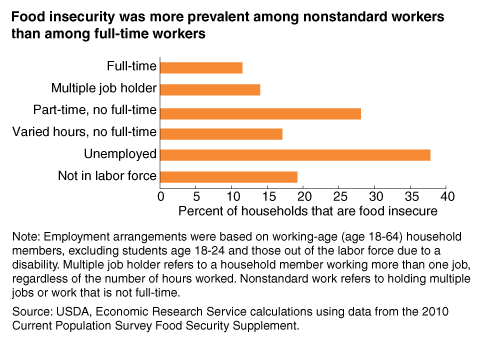Nonstandard work arrangements may make households more susceptible to food insecurity
- by Economic Research Service
- 6/27/2012

In 2010, 14.5 percent of U.S. households were food insecure or had difficulty putting enough food on the table. Food insecurity rates were higher for households with members in nonstandard work arrangements-multiple jobs, part-time work, or varied work hours-than for households with members in full-time jobs. For example, 11.5 percent of households with one or more members engaged in full-time work were food insecure in 2010, while 28 percent of households with a member engaged in part-time work (and no full-time work) were food insecure. An ERS study found that among households with otherwise similar characteristics, including income, those with members in nonstandard work arrangements were more likely to be food insecure than those with members in full-time jobs. This chart appeared in "Food Insecurity More Common for Households With Nonstandard Work Arrangements" in the June 2012 issue of ERS's Amber Waves magazine.

